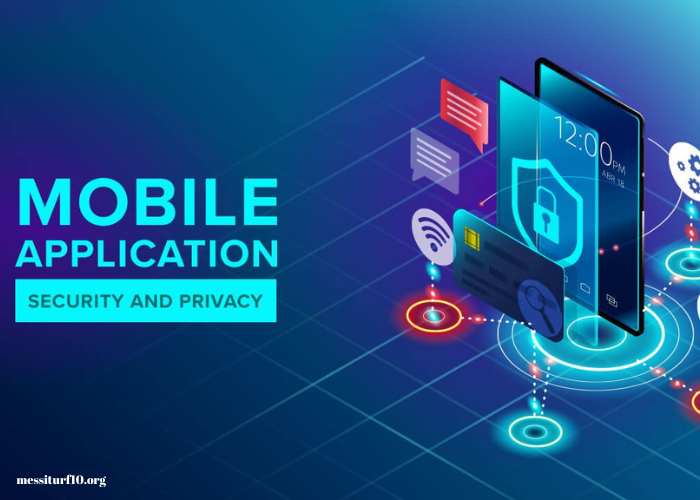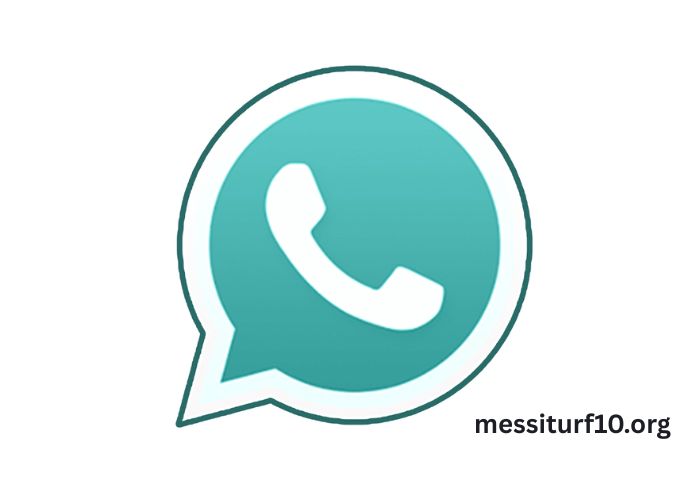We use mobile apps every day, which make life easier but can also put our info at risk. Mobile
app security tools protect us from dangers like hackers getting into our private stuff or stealing
money. These tools are super important for keeping mobile apps safe and secure.
Why Mobile App Security Matters?
More and more, we use mobile apps for banking, social media, shopping, and other things.
That means lots of our sensitive data like personal info, money stuff, and company secrets get
handled by apps. If bad guys break in, they could steal data, take money, ruin reputations, or
cause legal trouble. Mobile app security tools have lots of ways to prevent these risks.
Types of Mobile App Security Tools
There are different kinds of mobile app security tools, each doing an important job for app
safety.
1. Mobile Application Security Testing (MAST) Tools
MAST tools test apps to find weaknesses that bad guys could use to get in. They pretend to
hack the app to identify holes like unsafe coding, data leaks, or unencrypted storage. Static
Analysis Tools: These check the app's code or files without running it. They spot issues like
risky coding habits, info leaks, and insecure data storing. Dynamic analysis tools track an app as
it runs. They spot security risks that haven't shown up yet. These tools examine how the app
behaves, communicates online, and stores information.
2. Mobile Device Management (MDM) Tools
MDM tools manage and secure mobile devices in organizations. IT administrators use them to
enforce security rules, control app installations, and remotely clear stolen/lost devices. MDM
tools maintain secure mobile environments for bring-your-own-device (BYOD) policies.
3. Mobile App Firewalls
Mobile app firewalls shield apps from threats. They oversee network traffic, blocking
unauthorized access or suspicious activity. These firewalls detect and prevent attacks like
cross-site scripting (XSS), SQL injection, and denial-of-service (DoS).
4. Application Wrapping and Containerization
Application wrapping adds a security layer to mobile apps. It lets organizations apply security
policies without changing source code. Containerization creates isolated environments for
mobile apps, separating sensitive and personal data. Both enhance security through additional
protection layers.
5. Encryption and Data Protection Tools
Securing data is crucial in mobile apps. Encryption tools ensure safety by converting info to
coded form. They use algorithms like AES, TLS to protect stored, transmitted data from prying
eyes. Encryption is key for mobile app security.
Best Practices for Mobile App Security
Apart from security tools, developers should follow best practices. These recommendations
enhance mobile app security:
1. Secure Coding Practices
Devs must code securely. Validate user inputs. Avoid hardcoded credentials. Use secure
protocols. This prevents vulnerabilities.
2. Regular Security Testing
Test security regularly from design to deployment. Identify, address vulnerabilities at all
stages.
3. Implement Authentication and Authorization
Strong authentication, authorization mechanisms are essential. Use multi-factor authentication,
secure token-based authentication. Control access via roles, permissions.
4. Keep Apps and Operating Systems Updated
Regular software updates address security holes. App developers issue updates often. Users
must install these updates right away.
5. Teach Users
Educating users on security practices is vital. Organizations should guide users to avoid public
Wi-Fi and detect phishing scams. Mobile app security constantly adapts to new threats and
technology. As mobile apps become essential, their security risks increase. This requires
constant innovation in security approaches and tools.
Significant emerging trends in mobile app security
1. Zero Trust Architecture (ZTA)
Zero Trust Architecture (ZTA) verifies every access request, no matter the source. This
minimizes attack surfaces. ZTA is gaining popularity, enabling tighter control over app access
and data, reducing insider and external attack risks. ZTA uses multi-factor authentication
(MFA), secure network access, and robust authorization protocols. It challenges traditional
perimeter-based security by focusing on continuous monitoring and validation at every step.
2. AI and Machine Learning in Security
Mobile app security is improving due to artificial intelligence (AI) and machine learning (ML).
These helpful tools analyze huge data stores and detect weird patterns. They can spot threats
fast, reducing successful attacks. AI and ML learn from past issues, adapting to new threats.
This is vital for mobile security, as threats constantly change and static security is insufficient.
AI tools proactively find weaknesses and offer fixes, helping developers create safer apps.
3. Privacy-Enhancing Technologies
As people worry about privacy, mobile app security focuses on protecting user info. Privacy-
enhancing technologies ensure confidentiality while allowing app functionality. Methods like
differential privacy, federated learning, and homomorphic encryption permit analysis while
safeguarding user data. These technologies offer enhanced security by lowering data exposure
risks. For instance, differential privacy adds noise to datasets to obscure individual data, while
federated learning lets models train on local data without sharing it over networks.
4. DevSecOps Practices
DevSecOps weaves security into DevOps. It stresses security's importance at every software
development stage. This trend shapes how mobile apps develop, with security woven from
design to deployment. By adopting DevSecOps, firms can identify and fix security flaws early,
reducing deploying insecure apps' risk. Approach encourages collaboration, fostering culture
where security is shared responsibility across development, operations, security teams.
5. Blockchain and Decentralized Security
Blockchain enters mobile app security due to decentralized, immutable nature. By leveraging
blockchain, mobile apps enhance security via transparent, tamper-proof records. Trend is
relevant for secure transaction apps like finance, supply chain. Blockchain security supports
decentralized identity verification, authentication, reducing centralized authority reliance,
minimizing single failure points. It adds a security layer by ensuring data can't be altered
undetected.
Advantages of using security tools for mobile apps
Mobile app security tools have many benefits, from protecting sensitive data to meeting
industry standards. As mobile apps become part of our daily lives, these tools are increasingly
important.
1. Finding Vulnerabilities Early
Security tools like static and dynamic analysis help find vulnerabilities early in development.
Fixing issues before launch reduces risk of exploitation. These tools uncover common
weaknesses like insecure data storage, weak encryption, or code injection.
2. Better Data Protection
Mobile apps often handle sensitive data like personal info, financial records, and corporate
secrets. Tools like encryption and data protection software secure this data in transit and at rest.
Encrypting sensitive data makes it hard for unauthorized users to access, even with device
access or intercepting network traffic.
3. Improved Compliance
Various sectors must follow strict rules about security. For example, healthcare has the HIPAA
(Health Insurance Portability and Accountability Act), while Europe enforces GDPR (General
Data Protection Regulation). Mobile app security tools assist companies in complying with
these regulations. The tools provide features that uphold security standards and generate
reports proving compliance. This minimizes legal risks and penalties related to non-
compliance.
4. Guarding Against Cyber Attacks
Mobile app security tools act as a defensive line against various cyber threats. These include
phishing scams, denial-of-service (DoS) attacks, and malware infections. Firewalls for mobile
apps and anti-malware software can identify and block malicious activities. This proactive
approach prevents attackers from compromising the app or device data. It reduces the danger
of data breaches and unauthorized access.
5. Secure User Authentication and Access Control
Secure user authentication and access control are vital for mobile app security. Tools like
multi-factor authentication (MFA) and OAuth-based authorization ensure only authorized users
can access sensitive app features and data. Such robust security mechanisms lower risks of
unauthorized access due to weak passwords or stolen credentials.
6. Remote Management of Devices
Mobile Device Management (MDM) tools let organizations manage and secure devices
remotely. This capability is especially handy for companies that allow employees to use
personal devices (BYOD policies). Administrators can enforce security policies, remotely
wipe devices, and control app installations via MDM. These tools aid in maintaining a secure
mobile environment through centralized device security control.
7. Increased Trust and Reputation
Firms employing mobile app security tools enhance security, building customer trust. A secure
app experience boosts user confidence, allowing them to utilize the app without data breach or
unauthorized access worries. This trust increase translates to a better reputation and loyal
customers.
8. Reduced Development and Maintenance Costs
Detecting vulnerabilities early and automating security testing reduces development and
maintenance costs. Addressing security issues during development avoids costly fixes and
potential reputation damage. Automated compliance reporting and testing tools save
developers and IT teams time and resources.
Conclusion
Mobile app security is complex and ever-evolving, requiring a multi-faceted approach. Mobile
app security tools play a crucial role in protecting sensitive data, ensuring app integrity, and
preventing unauthorized access. Understanding different security tool types and following best
practices allows organizations and developers to create a robust security framework
safeguarding mobile applications and users. Visit Appsealing for best deals.





